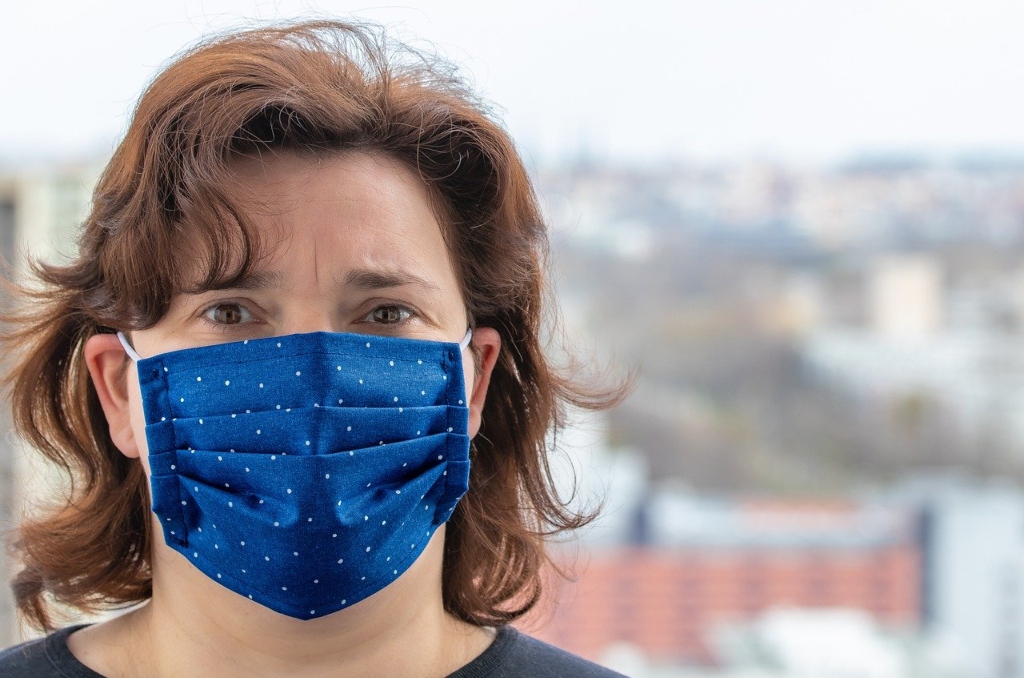Image by Alexander Droeger from Pixabay
During this time, everyone should wear non-medical face masks when interacting with others during the coronavirus pandemic, according to the US Centers for Disease Control and Prevention.You don’t need a fancy medical-grade mask to deter the spread of the coronavirus, but some face coverings do work better than others, according to a new study published in the journal Science Advances.
Researchers at Duke University tested the effectiveness of 14 commonly available masks and found that surgical masks and N95 respirators without valves worked the best at blocking respiratory droplets from projecting into the air when a person talks. A variety of double-layer polypropylene and cotton masks also reduced a significant amount of spray from normal speech.
Bandanas, knitted masks and neck fleeces (also called gaiter masks) were all found to be ineffective in preventing droplets from spreading into the air if someone were to cough. Neck fleeces may be worse than wearing no mask at all. The researchers found that neck fleeces actually dispersed more spray into the air, not less, because the material broke down larger respiratory droplets into smaller particles.
The knitted masks didn’t fare well, but using a bandana was worse. The neck fleece used as a mask was actually worse than no mask at all because the droplets were broken down by the fleece and actually spread more.
Lately, public health experts have stressed the importance of wearing face masks as a way to deter the spread of the coronavirus. This is especially necessary for asymptomatic carriers, or people who don’t know they have the virus because they never develop symptoms. Face coverings act as a barrier by helping to keep respiratory particles from escaping an infected individual and landing on another person.
The best way to tell if a mask is good at blocking particles is to pull it tight and hold it up to the sky. “If you can see daylight through the mask, it’s not so good. Or if you can take it and blow really hard, and [your air] just goes right through, that’s not blocking much,” says Eric Westman, M.D., an associate professor of medicine at Duke University School of Medicine and a coauthor on the study.
For the study, the team from Duke University (which included a total of 6 people including Westman) created some “spitting” images of a person talking into a box. The study used freaking laser beams to do this. The laser beams created a sheet of light inside the black box in front of a hole in the box. So, essentially the experiment wasn’t just a black box. Next, the research team asked a person to position his or her mouth at the hole and repeat the phrase, “stay healthy, people,” five times. Therefore, anything that would come of the person’s mouth, whether it’s small droplets or hot dog fragments, would subsequently hit the sheet of light, causing the light to scatter. In other words, any droplets or particles would scatter the sheet out of it. A cell phone camera filmed this sheet show, which would allow the researchers to quantify how much stuff was coming out of the person’s mouth.
The person repeated this procedure multiple times, first without any face covering and subsequently with 14 different types of face masks. The person didn’t wear all 14 masks at once, which would have looked ridiculous. Instead, the person tried them one at a time. The research team established a relative droplet count scale with a 1.0 count representing the number of droplets that hit the sheet when the person had no face covering and 0.0 representing what happened with the best mask of the bunch. Again, keep in mind that this is just a person trying just one version of each of 14 different types of masks.
The person repeated this procedure multiple times, first without any face covering and subsequently with 14 different types of face masks. The person didn’t wear all 14 masks at once, which would have looked ridiculous. Instead, the person tried them one at a time. The research team established a relative droplet count scale with a 1.0 count representing the number of droplets that hit the sheet when the person had no face covering and 0.0 representing what happened with the best mask of the bunch. Again, keep in mind that this is just a person trying just one version of each of 14 different types of masks.
The 14 masks tested included a fitted N95 respirator, a valved N95 respirator, surgical masks, several types of cotton mask, a poly/cotton blended mask, a knitted mask, a bandana and a fleece.
Westman says more research is needed to test mask effectiveness, but in the meantime, the study shows that accessible, low-cost options do work.
14 Masks Ranked From Most Effective to Least Effective
1. Fitted N95, no valve
2. 3-layer surgical mask
3. Cotton-polypropylene-cotton mask
4. 2-layer polypropylene apron mask
5. 2-layer cotton, pleated style mask
6. 2-layer cotton, pleated style mask
7. Valved N95 mask
8. 2-layer cotton, Olson style mask
9. 1-layer Maxima AT mask
10. 1-layer cotton, pleated style mask
11. 2-layer cotton, pleated style mask
12. Knitted mask
13. Double-layer bandana
14. Gaiter type neck fleece
Source: Duke University, Science Advances (via www.AARP.org/coronavirus)
Melissa’s career in writing started more than 20 years ago. Today, she lives in South Florida with her husband and two boys.

